Can You Squat Every Day Safely?
Author:
Reviewed by:
(21 years of Oly Lifting experience)
Unlock your full potential by engaging with our experts and community! Have questions about your fitness journey or looking for expert advice on weightlifting techniques? Don’t hesitate — leave a comment below and Jason Li will provide a personalized answer and insights to help you reach your goals.
Torokhtiy is reader-supported. Some links are affiliate links, and we may earn a commission at no extra cost to you. See our disclosure page for details.
Do you want to know the advantages and disadvantages of squatting daily? Plunge into our all-inclusive guide, where the truth about this fitness craze is unveiled. Explore what experts know, the practical ideas that work, and the key points you need to know to choose a workout routine that suits you best.
Can You Squat Every Day? – Yes, but with caution. Squatting is one of the best activities for strength and muscle growth. You should include regular squatting into your routine because it’s a fundamental movement pattern, to build strength and prevent injuries, but it’s very important not to overdo it.

Can You Squat Every Day?
This is a topic of debate. Technically, it’s possible, but the safety and necessity depend on several factors. Squatting every day needs a well-thought-out plan that balances intensity, volume, and recovery to avoid overtraining and injury.
Variations and Progressions
Variations and progressions are important to target different muscle groups and prevent injuries from overuse. However, just changing squat variations doesn’t necessarily make it safe or effective to squat every day. Different squat variations don’t change the fact that you’re still squatting and stressing the same muscle groups and joints.
So, can you squat every day? Yes. Should you? Only if there’s a specific reason for it because more does not necessarily mean better. Here are some important points to consider:
- Recovery: You need to allow your muscles to recover after heavy sessions and if you squat every day (with high intensity), it can lead to overtraining and injury
- Volume and intensity: Your weekly volume should be between the minimal effective volume and the max volume you can recover from
- Avoiding mileage: High-frequency squatting can wear down your joints
- Heavy and light sessions: If you decide to squat daily, make sure you don’t have more than 2-3 heavy leg sessions a week
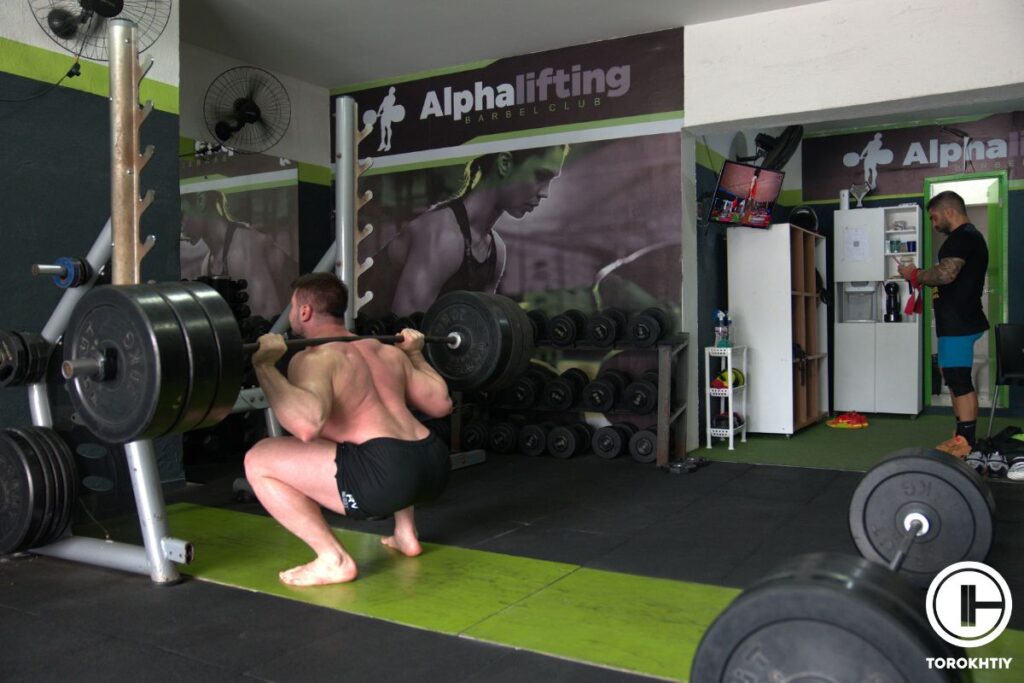
Here’s how your weekly plan can look like:
- Maintenance session (low-medium volume, high/medium intensity)
- Development session (high/medium volume, high intensity)
- Recovery session (low/medium volume, low intensity)
- Maintenance session
- Development session
- Recovery session
2 Benefits of Everyday Squats
What happens if you squat every day? Making your muscles work and engaging core stabilizers while deadlifting or squatting allows you to experience enhanced muscle growth and strength. While the benefits of swinging kettlebells/dumbbells are improved joint mobility and flexibility, which will boost your physical performance.
✅ Enhanced Muscle Growth and Strength
Squats can make muscles bulkier and stronger as they focus on the major muscle groups: quadriceps, hamstrings, glutes, and lower back.
✅ Improved Joint Mobility and Flexibility
Strengthening the muscles and joints, mainly through flexion of the hips, knees, and ankles, is a kind of exercise that facilitates joint health and the ability to move. It’s a movement pattern you will use daily anyway – so it’s better to master it.
2 Drawbacks of Everyday Squats
Before starting to squat regularly, it is important to understand its risks. You might encounter consequences of overuse injuries, tendon pain, and muscle debility just by sticking to the everyday squat.
This scenario may negatively affect your fitness goals. We are going to dive deep into these limitations so that you make the right decision about this type of workout.
❌ Risk of Overuse Injuries
Daily squatting may become the reason for chronic injuries in the knees, hips, and lower back. The tendons and muscles on the knees and ankles in particular, are permanently exposed to continuous pressure, and lack of rest may result in inflammation and strains, even leading to more serious injuries such as tendonitis and stress fractures.
❌ Muscle Fatigue and Plateau
People can gain muscle size and strength a daily by performing squat. Still, you won’t have a fresh start without renewed energy the next day. In case you lack recovery time after daily exercises, you’ll feel muscle fatigue as well as hit a plateau.
How to Squat Every Day?
First, determine what your goal is because daily squatting needs a clear understanding of your goals. Strength, hypertrophy, endurance – whatever the case, your goal structures your program.
To squat safely, you need to balance volume and intensity to allow for proper recovery and adaptation. Here are some tips to help you out:
1. Training Volume
Training volume means the amount of workload per session. If you start doing squats every day, you need to manage training volume to avoid overtraining and maximize the benefits.
Moderate Volume
For beginners, you need to start with a moderate volume – with 6 to 25 reps per set depending on your goal, with 10-12 sets per week. This will allow the muscles and joints time to recover while building strength and endurance.
High Volume
Those that are advanced can handle higher volumes and intensities with daily squatting. This can be anywhere from 8 to 25 reps for hypertrophy, with enough recovery between sets. Focus on the minimum effective volume and the max volume you can recover from, considering both local and systemic fatigue.
Follow us!

Free!
Get a 2-week Weightlifting Program as a bonus for the subscription to kickstart your training plan!

Free!
2. Training Intensity
This is the level of effort you put into an exercise. You want to balance intensity with workload to avoid overtraining and injuries. Some cardio like cycling can help in this regard. The good way to set intensity is through rate of perceived exertion – RPE, and reps in reserve – RIR.
Moderate Intensity
Do squats with moderate intensity, using a weight that allows you to complete the required reps with proper technique.
Varied Intensity
Adjusting intensity daily helps prevent overtraining and keeps your muscles from adapting to the same routine. Here’s what we suggest for a weekly model:
- Maintenance session (RPE 6-7)
- Development session (RPE 8-10)
- Recovery session (RPE <6)
- Maintenance session
- Development session
- Recovery session
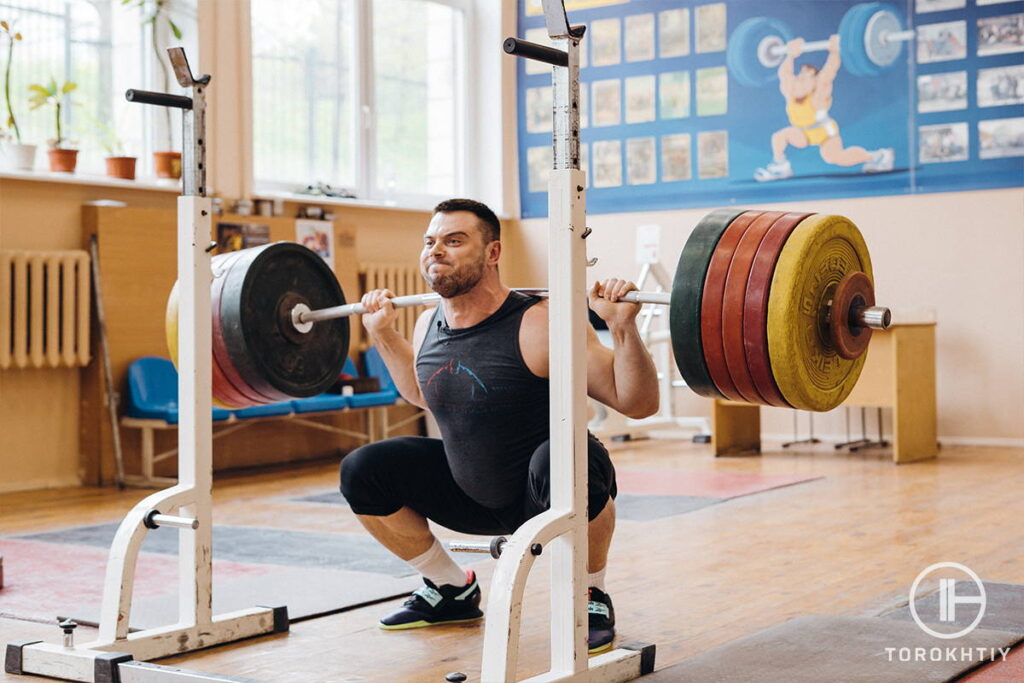
3. Training Frequency
Since the goal is to squat every day, you’ll need to focus on modulating training intensity and volume because your frequency is suprahigh. When you adjust these, it will help prevent overtraining and support recovery. Incorporate a mix of maintenance, development, and recovery sessions so your training is balanced and effective.
4. A Sample of a Weekly Squat Training Plan (High, Medium, Low Intensity)
- Monday: back squats – 3-4 sets of 6 reps (H)
- Tuesday: front squats – 3-4 sets of 10 reps (M)
- Wednesday: bodyweight squats – 4 sets of 20 reps (L)
- Thursday: ssb box squats – 3-4 sets of 6 reps (H)
- Friday: overhead squats – 3-4 sets of 8 reps (M)
- Saturday: rest or active recovery
- Sunday: Bulgarian split squats – 4 sets of 10 reps per leg (L)
Weekly Plan for Everyday Squats
If you want progress without injuries, you’ll need to tailor your squat training based on your specific goals. Below are two sample plans: one focused on muscle growth (hypertrophy) and the other on strength development.
1. Hypertrophy Plan (Muscle Growth)
With muscle growth as a main goal we won’t give you specific reps and weight as it is not really needed like it’s in case of Strength training. Things that matter and you need to make sure are covered are:
Effective volume you can recover from – try to stay between 12-20 effective sets (without warmup sets) in a week.
Intensity – in this case what matters is that all effective sets should be performed very close to failure, with the rep range basically anywhere from 6-25 reps.
So to summarize – 12-20 sets in a week with weight you’ll lift very close to failure in a 6-25 rep range.
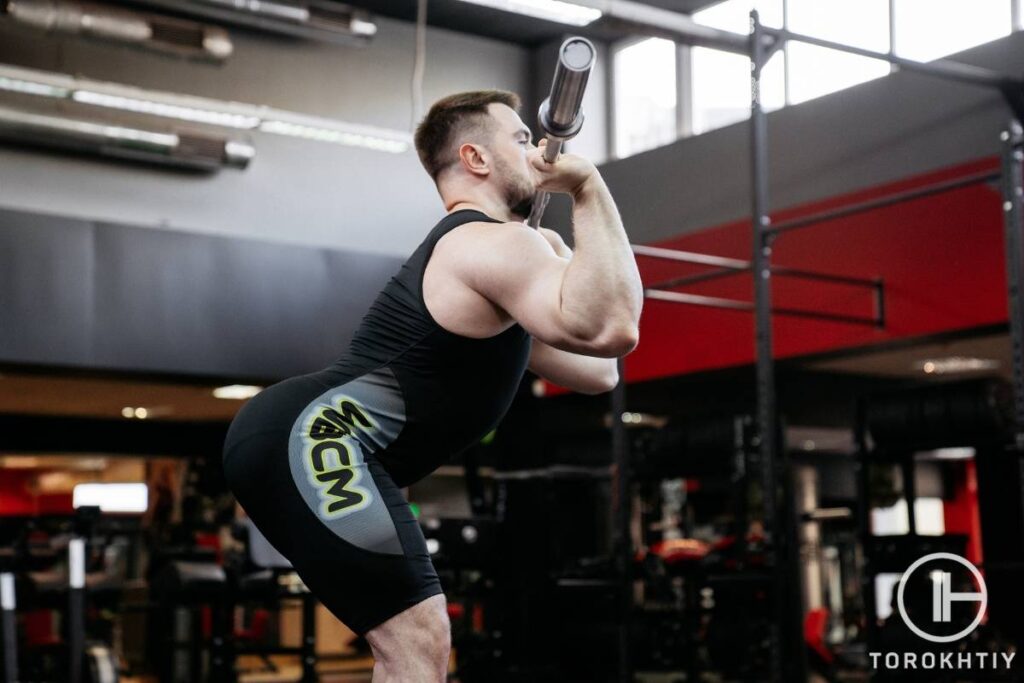
Day 1: Squats
Choose one of the squat variations and focus on it with high effort to ensure optimal muscle growth. Use a weight that brings you close to failure by the last few reps.
Day 2: Plyometric Squat Jumps
On the second day, you’ll kick it up a notch with plyometric squat jumps to develop explosive power along with your muscles. Each jump needs to be done with maximum effort.
Day 3: Bulgarian Split Squats
Targeting your legs individually will result in a balanced strength development. You can use either barbell or dumbbells with enough weight to reach near failure by the last few reps.
Day 4: Recovery
You can either chill and do nothing or you can opt for active recovery, like foam rolling (10 minutes), mobility drills (15 minutes), or light cardio (20 minutes).
Day 5: Goblet Squats
Add some variety with a squat that will focus more on your core. Use a kettlebell or a dumbbell and, as always, aim for near failure by the end of each set.
Day 6: Sumo Squats
On the sixth day, you’ll focus on your inner thighs and glutes with this wide-stance squat.
Day 7: Tempo Squats
Slow down the eccentric (lowering) phase and pause at the bottom.
Save it for easy access!
Bookmark this page now to access the program and instructional videos anytime, anywhere.
Stop wasting time searching during your gym sessions.
2. Strength Plan
Like we said before with strength as a goal it’s a bit more complicated and there is much less room for error. Technique needs to be excellent as the weight will be much more challenging. To be stronger you need to challenge strength – check SAID principle – and that means you will need to go heavy.
Minimum 70% of your 1RM will be a good start and for the development session be sure you reach RPE 8-10 with that weight, and know that at some point you will need to challenge yourself with 90% of 1RM or higher.
Prilepin’s Chart is another thing worth checking. Because of that effort you need to modulate intensity more carefully to make sure you’re recovering properly.
Day 1: Back Squats (High Intensity)
Start the week with heavy back squats to build foundational strength. Do 3-4 sets of 6 reps with a weight that challenges you and focuses on max effort.
Day 2: Front Squats (Medium Intensity)
Focus on your form and moderate load to maintain strength and technique. 3-4 sets of 10 reps with a moderate weight.
Day 3: Bodyweight Squats (Low Intensity)
Light day for some active recovery and maintaining mobility. Do 4 sets of 20 reps with a full range of motion.
Day 4: SSB Squats (High Intensity)
Use a heavy weight and focus on explosiveness from the box. 3-4 sets of 6 reps for th fourth day!
Day 5: Overhead Squats (Medium Intensity)
On the fifth day, you’ll challenge your core and stability with overhead squats. 3-4 sets of 8 reps with a moderate weight.
Day 6: Rest or Active Recovery
Give yourself a break and chill on the couch for the day. If you get antsy, you can do some yoga, stretching, or you can take a walk.
Day 7: Bulgarian Split Squats (Low Intensity)
Target your legs individually for balanced strength and use bodyweight or light dumbbells. Focus on form and control.
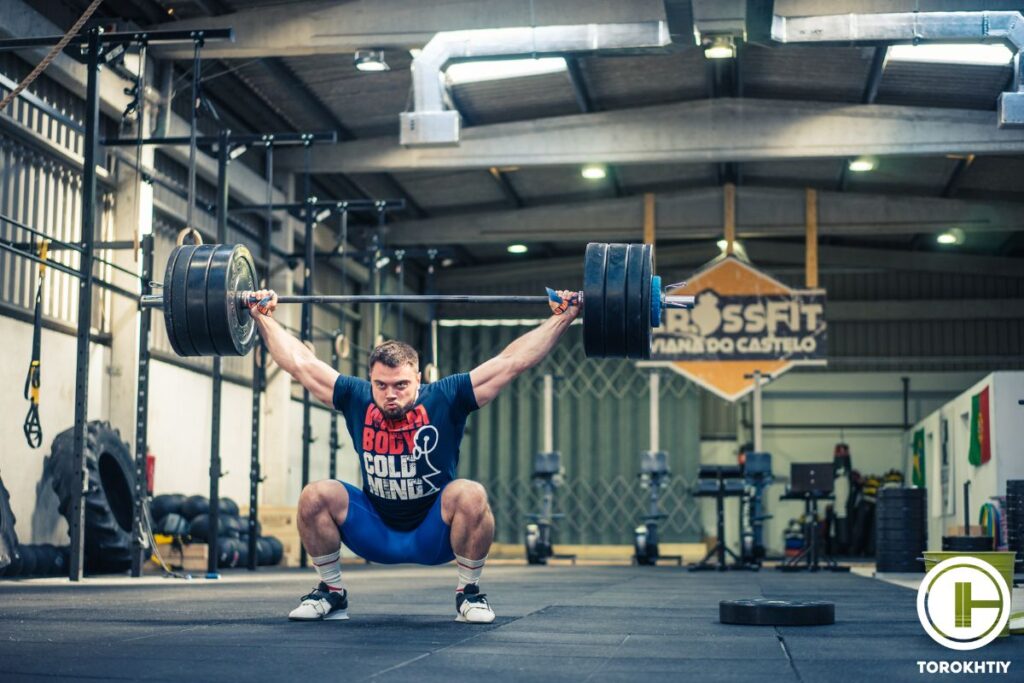
Who Can Benefit From Squatting Every Day?
Squatting every day is something many people can benefit from, but it’s not a one-size-fits-all kind of thing. If you’re an athlete (especially one that relies on explosive lower body strength and power), you might see improvements in power and strength, while fitness enthusiasts can improve their overall fitness and muscle tone.
People who are recovering from injuries, older adults, people who lead a sedentary lifestyle – all of these groups can benefit from daily squatting. That is, if it’s done correctly.
That’s the main thing – it depends on how it’s done. While you can squat every day, it’s not necessary to maximize your results. The key is to move every day in some form, but that doesn’t have to mean squatting. But if it’s squatting or nothing – choose squatting 🙂 just make sure you take into considerations things we mentioned in the article
🔻GET A FREE PROGRAM DEMO: 12 Week Squat Program by Oleksiy Torokhtiy
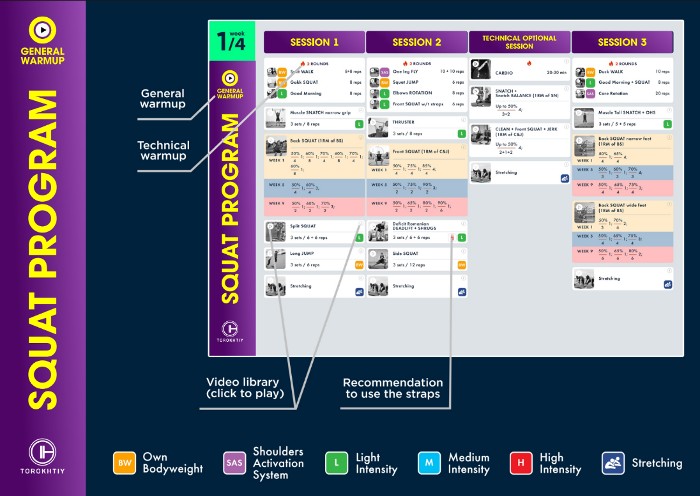
Do you want to double your squat strength? In just 12 weeks, you’ll be able to boost your squat results.
Enter your details and get a free demo (1 free week) of the squat program straight into your inbox.
Who Should Avoid Squatting Every Day?
Doing squats every day is a great way of gathering strength, muscle growth, and overall fitness. However, you should consider individual factors such as an individual current fitness level, recovery capacity, and existing injuries. Certainly, some people can ask themselves, “Is it safe to squat every day?”
And the answer is – not everyone. If you’re someone that lacks proper squatting technique, there’s no point in squatting daily because results and safety come from proper form. Without it, you’re just wasting your time and you should always prioritize form.
If you have an injury that’s aggravated by squatting, you should also refrain from doing squats because, well… You don’t want to make your situation worse, right? It’s just common sense at this point.
In addition to this, you shouldn’t squat if you can’t stick to a workout program that adheres to the basic principles of intensity, volume, and recovery, which we discussed earlier. If your program isn’t well-structured, it can lead to overtraining, burnout, and injury.
Another thing is that if you choose to squat everyday and for some reason decide to ignore the rest of your body – that isn’t probably the smartest thing – make sure you train your whole body.
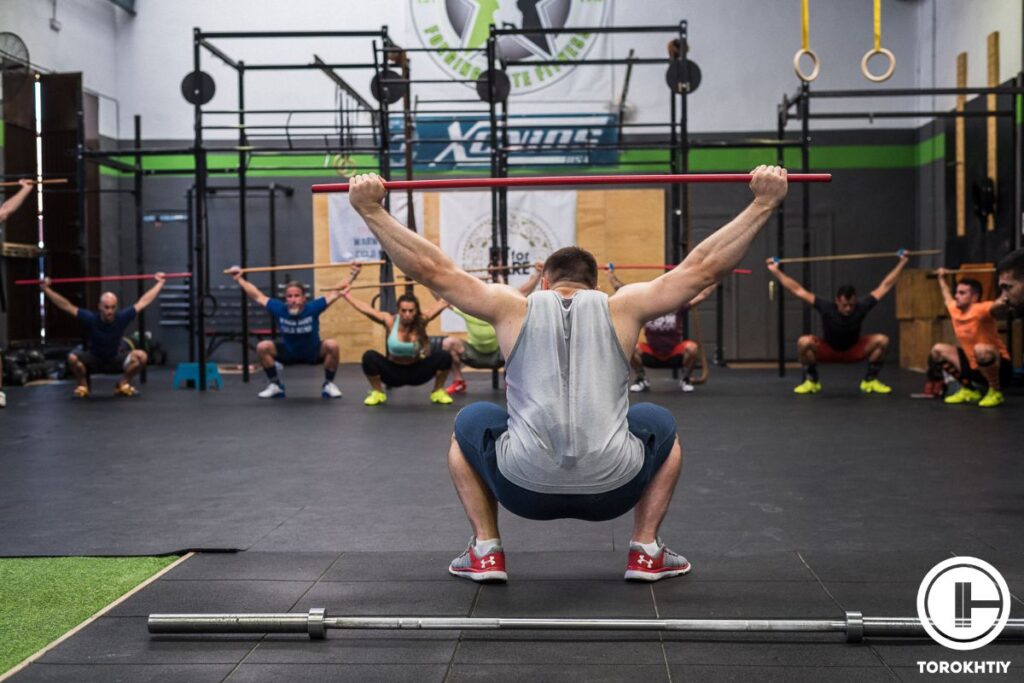
How Do You Recover From Everyday Squats?
Recovery is a crucial aspect of squatting every day so that one can prevent overuse injuries, promote muscle repair, and maximize stability gains. So besides structuring your program properly, Here are some effective strategies to aid recovery and optimize your recovery process after daily squatting sessions:
1. Nutrition
If you decide to train everyday (even if you aren’t being honest) make sure you’re carefully paying attention to your nutrition. Adequate protein intake and enough calories and micronutrients are the absolute minimum you need to cover.
On top of it you may consider consuming carbs after workout to help with glycogen recovery. I’d also suggest including Creatine Monohydrate into your daily routine and if needed some supplement that could potentially optimize your recovery process (omega-3, turmeric, L-Carnitine L-Tartrate and more).
2. Hydration
Keep your hydration levels up by including a proper amount of water in your routine to replenish the lost body fluids and help in the metabolic process through cell repair.
3. Rest and Sleep
Make a point to get proper sleep and rest that will give a chance for the tissue and nervous system to handle the damage of the daily squat as well as the healing of the tissue.
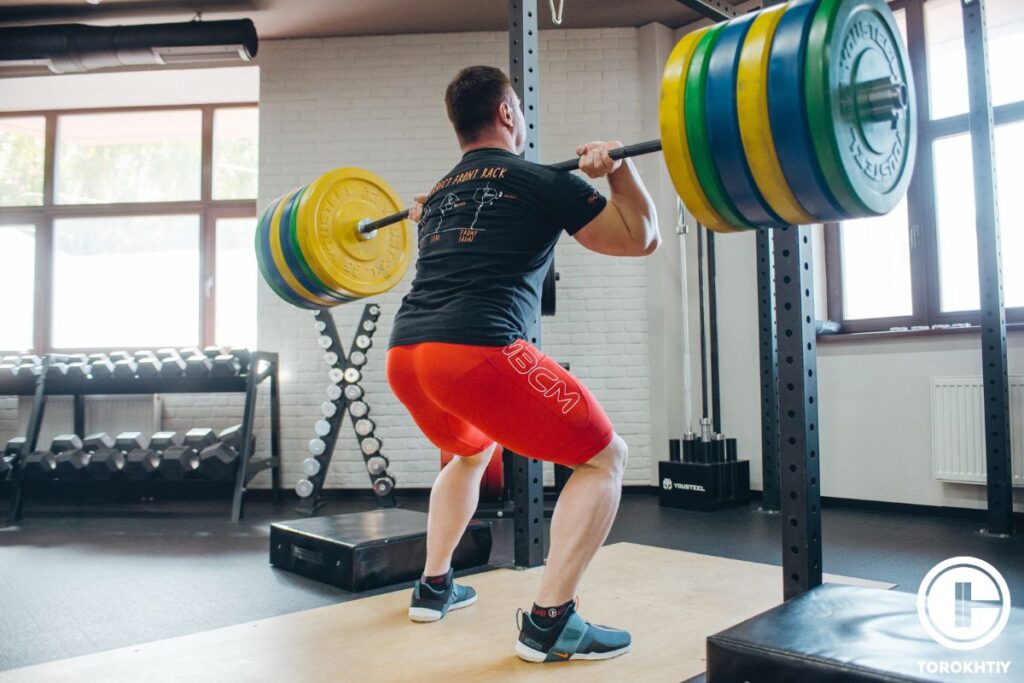
4. Active Recovery
Move gently at a mild pace or perform low intensity exercises between hard workouts to clear waste products, alleviate muscle pain and accelerate recovery.
5. Foam Rolling and Stretching
Choose a daily routine to involve foam rolling and dynamic stretching to decrease muscle tension, improve flexibility as well as mobility.
6. Massage and Bodywork
Massage therapy or bodywork sessions as part of the regimen may be helpful in the process of recovery as it eases muscle tension, decreases inflammation as well as promotes relaxation.
7. Cold Therapy
Apply ice baths, cold packs, or contrast showers which will minimize inflammation, numb the pain and speed up the recovery rate after squatting sessions.

FAQ
Is It Okay to Squat With Weights Every Day?
Squats may not be for everyone. You need to be physically fit at a level and you should try it and see whether you can make it, it is also vital for you to recover and have a good training program.
Likewise, the starters or those who have pre-injuries can manipulate rest or reserve days to avoid overuse injuries. Changing the heavy and light squats is also a useful way for injury avoidance.
How Many Days a Week Should I Squat?
The number of squats that is optimal is defined individually depending on one’s training purposes, physical fitness and regeneration capability. The efficiency of different bicycle transportation may depend on the season.
For my part, I would suggest listen to your body, recover well and adjust your re-loading while considering how your body feels.
Is It Bad to Squat Too Much?
Overtraining may give you muscular overuse, muscle fatigue and eventually burnout, unlike when you do not have an appropriate sleeping and resting schedule.
It is very critical to monitor the training regiment of the athlete for the correct ratio of volume, intensity and frequency because both of them (i.e. under training and overtraining) should be prevented.
Integration of rest days, adjusting squat intensities, and inducing muscle responses work can reduce the negative effects of overexerting the same muscles.
Conclusion
In general, daily squats can give a lot of strength, muscle growth, and improve general fitness, but it needs to be carefully planned and individual needs should be considered as well. Recall to focus on the recovery, and follow your body cues as well as the changes of your routine. Have questions or thoughts? Please share them in the comments below!
Also Read:
- Do Squats Make Your Butt Bigger? (Improve The Result)
- 5 Quad-Focused Squat Variations for Strength & Size
- Do Squats Work Abs? Variations & 5 Alternatives
- Best Squat Warm-Up For Peak Performance
- Bad Squat Form: 7 Common Squat Mistakes Explained
- 8 Squat Cues For Perfect Form And Strength
- 11 Squat Accessory Lifts to Boost Your Squat Results
References:
- Ashwin Wayne Isaacs, Kathryn Helen Myburgh, Filippo Macaluso, “Low-Volume Squat Jump Training Improves Functional Performance Independent of Myofiber Changes in Inactive Young Male Individuals,” PubMed Central (Year of Publication), URL: https://www.ncbi.nlm.nih.gov/ pmc/articles/PMC9321048/ (accessed Feb 19 2024).
- Silvio Lorenzetti, Mira Ostermann, Fabian Zeidler. “How to squat? Effects of various stance widths, foot placement angles and level of experience on knee, hip and trunk motion and loading”, BMC Sports Science, Medicine and Rehabilitation. (2018), no. 10: 14.
- Giuseppe Coratella, Gianpaolo Tornatore, Francesca Caccavale. “The Activation of Gluteal, Thigh, and Lower Back Muscles in Different Squat Variations Performed by Competitive Bodybuilders: Implications for Resistance Training”, International Journal of Environmental Research and Public Health, no. 18(2), (2021): 772.
- Slater, Lindsay V.; Hart, Joseph M. “Muscle Activation Patterns During Different Squat Techniques”, Journal of Strength and Conditioning Research, no. 31(3), (2017): 667-676.
- Hansen Keir, Cronin John. “Training Loads for the Development of Lower Body Muscular Power During Squatting Movements”, Strength and Conditioning Journal, no. 31(3), (2009): 17-33.
- Photos are made by Torokhtiy Media team.
Why Trust Us?
With over 20 years in Olympic weightlifting, strength training, nutrition coaching, and general fitness our team does its best to provide the audience with ultimate support and meet the needs and requirements of advanced athletes and professional lifters, as well as people who strive to open new opportunities and develop their physical capabilities with us.
By trusting the recommendations of our certified experts in coaching, nutrition, and sports training programming, as well as scientific consultants, and physiotherapists, we provide you with thorough, well-considered, and scientifically proven content. All the information given in the articles concerning workout programming, separate exercises, and athletic performance, in general, is based on verified data.
The product testing process is described in more detail here.
Author: Jason Li
Personal Coach, Functional Range Conditioning Mobility Specialist
Jason is an NYC personal training expert and National level Olympic Weightlifting Coach with over 10 years of experience training everyday clients to high levels of performance. He has trained everyone from youth (13 years old and under) to masters (60+ years old) to regional and national rankings for powerlifting, Olympic Weightlifting, Short distance (up to 200m) sprinting, discus & hammer throwing.
Reviewed by: Oleksiy Torokhtiy
Olympic Weightlifting Champion, PhD in Sport Science
Best Results: Snatch – 200 kg,
C&J – 240 kg
Oleksiy Torokhtiy is a professional athlete boasting 20 years of experience in Olympic weightlifting. With multiple European and World titles under his belt, he has showcased his prowess in two Olympic Games (Beijing 2008 and London 2012). Upon concluding his illustrious career, Oleksiy dedicated himself to coaching. By 2022, he had conducted over 200 weightlifting seminars worldwide. He is the visionary behind an international sportswear and accessories brand known for its motto, “Warm Body Cold Mind.” Additionally, he is an esteemed author and the creator of a series of training programs and eBooks.




Still have questions after reading our article? Unlock your full potential by engaging with our experts and community! Don’t hesitate — leave a comment below and Jason Li will provide a personalized answer and insights to help you reach your goals.